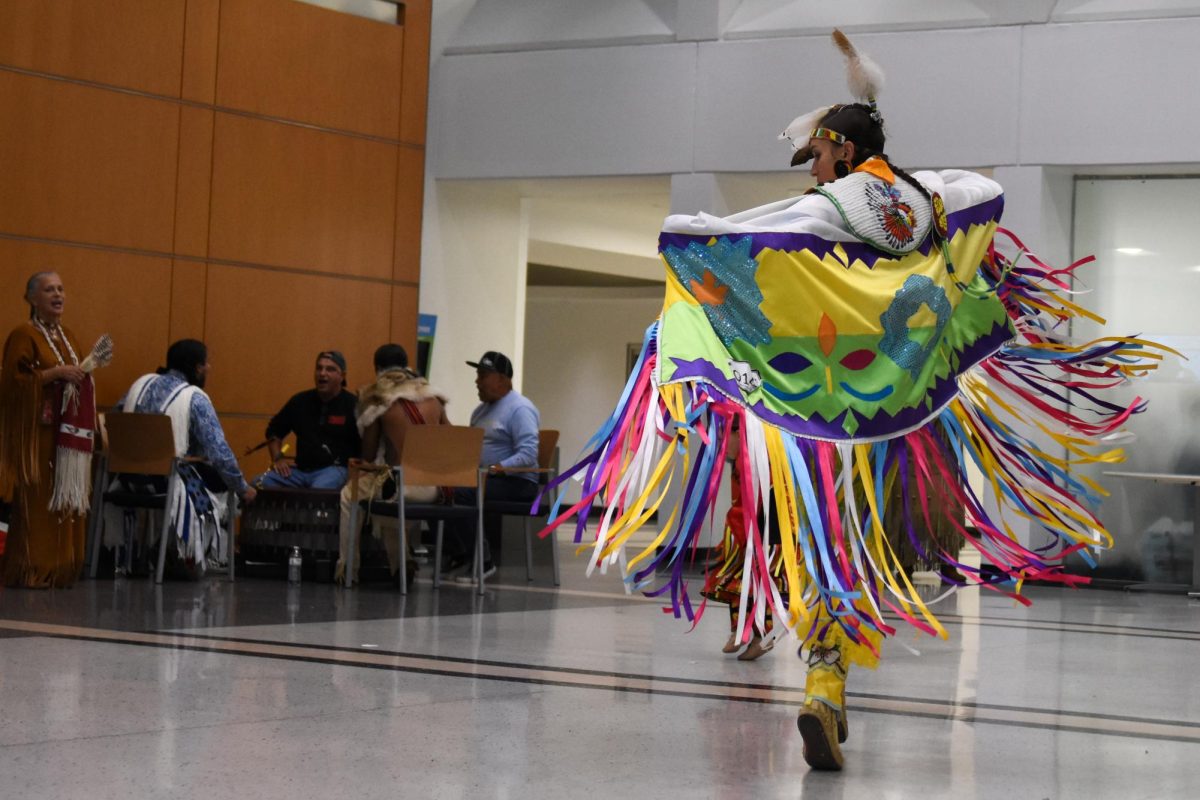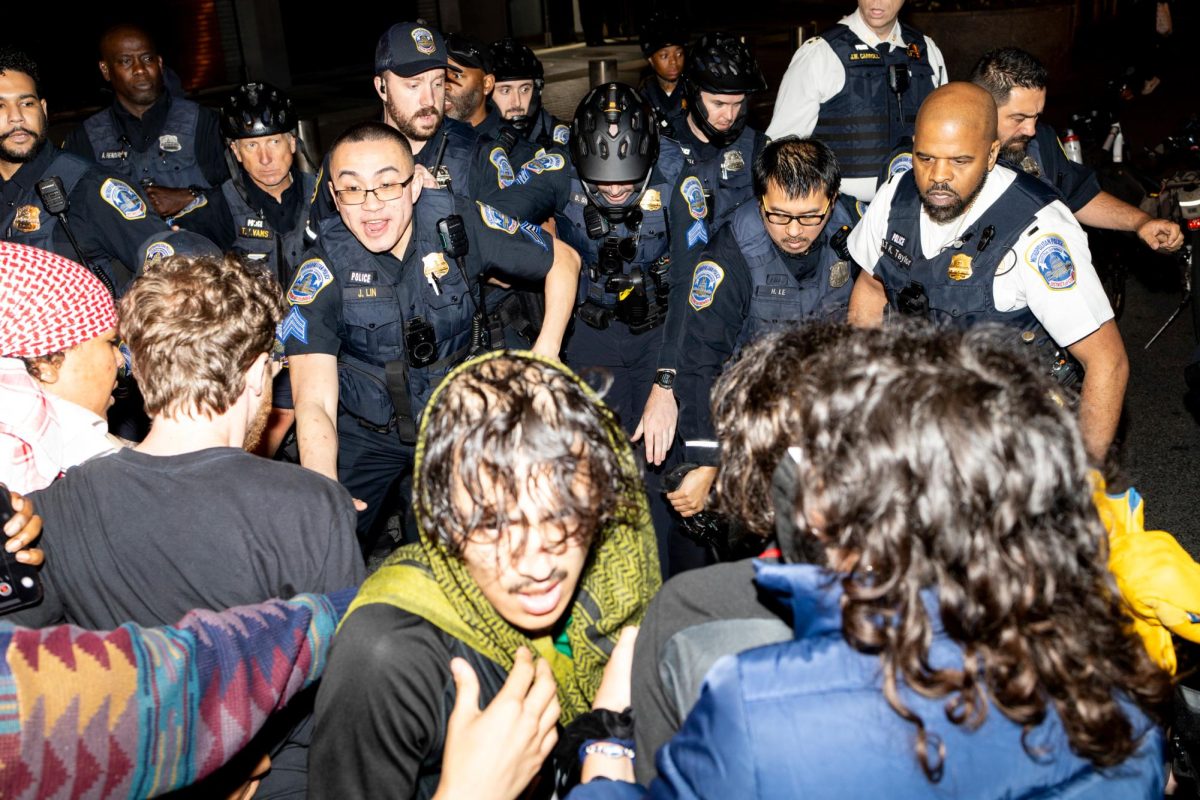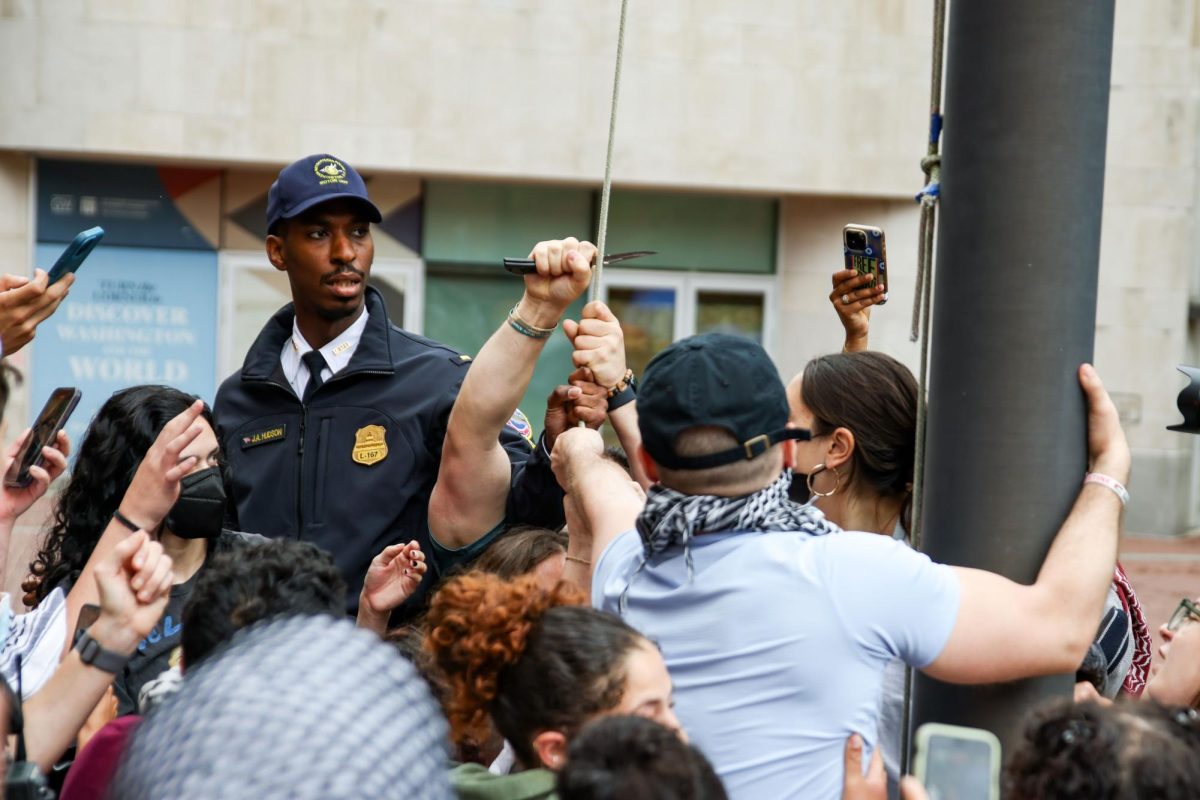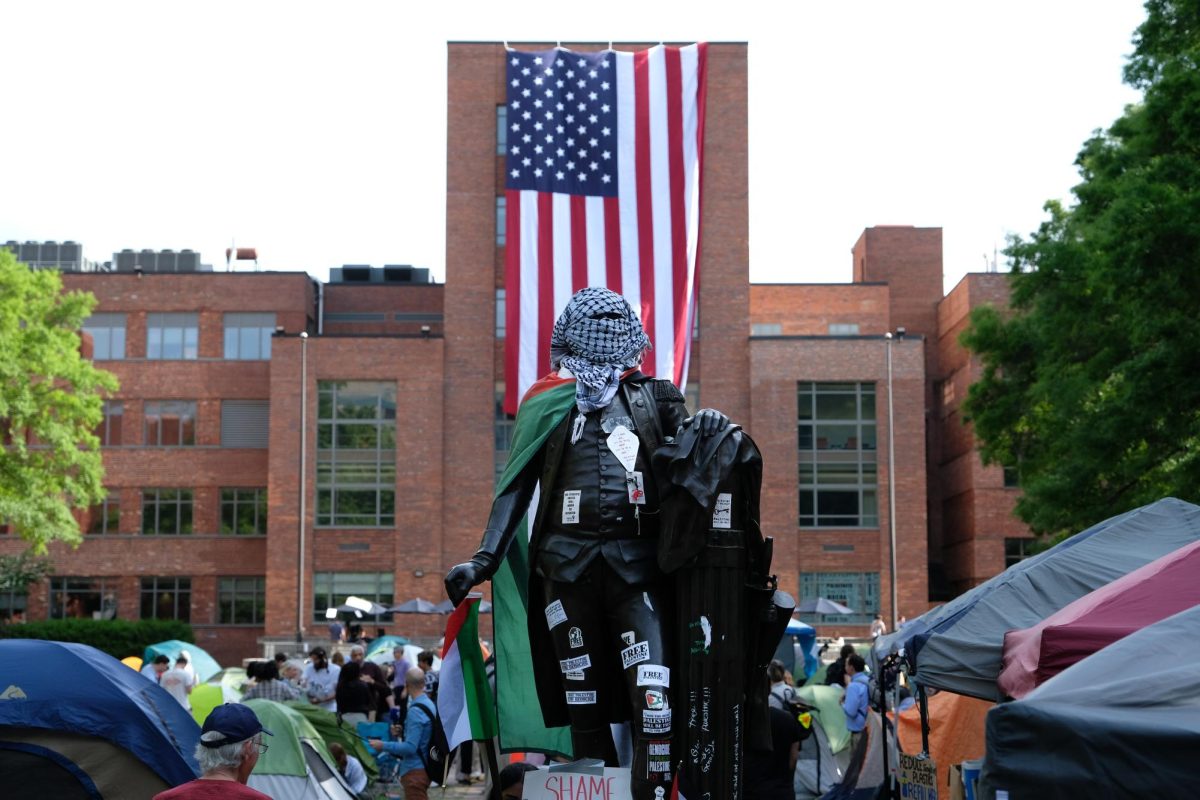November marks a monthlong celebration of Indigenous culture and community across the country, landing on GW’s campus where students are hosting a series of events to celebrate Native American heritage.
Students said they’re celebrating Indigenous culture through campus events like dance performances, film screenings and discussions with community members for Native American Heritage Month, a nationally recognized annual celebration during the traditional American harvest season each year. Executive board members of student group Students for Indigenous and Native American Rights said they hope to foster community and raise awareness of GW’s representation of Indigenous students through these events.
Riya Sharma, a senior and co-founder of Students for Indigenous and Native American Rights, said Native American Heritage Month provides a space for Indigenous students to celebrate themselves but that non-Native students should also take the time to educate themselves through programming because they reside on Indigenous land.
“It’s more than just celebrating the culture and moving on and forgetting about it,” Sharma said. “It’s making a lasting impact and making sure that native voices are present beyond November.”
She said about 10 students — both Native and non-Native — attended the month’s first event, a beading workshop Nov. 4 with Melanie Bender, a Choctaw and Apache artisan from Tennessee. Sharma said giving students the opportunity to learn beading from a Native American artist was significant in honoring the artwork’s prevalence in Native communities.
“That’s something that the students were able to learn and now can take with them,” Sharma said. “They could keep the beading loom afterward. They can keep the knowledge afterward.”
Sharma said David Silverman, a professor of early and Native American history at GW, will be a guest speaker for the group’s Monday night event centered around the Indigenous history of Thanksgiving in Phillips Hall for part of the month’s programming.
Noah Edelman, a sophomore and co-vice president of SINAR, said GW doesn’t attempt to increase Native Americans’ low student enrollment, with Native students making up 0.05 percent of GW’s undergraduate body and about 0.2 percent of their graduate population, per 2023 GW data. Edelman, a Hatchet opinions writer, said since coming to GW, he’s learned he is the first Native person that a lot of people have met.
“If we can give people here maybe even their first exposure to Native culture, if they’re confused or upset, whatever, if they can see that it exists, they can look at it tangibly, I think that’s a success for us because that gets in their minds,” he said.
Jacob Brittingham, a first-year and member of SINAR, said moving away from the Choctaw reservation in Oklahoma to GW was “weird” because GW students are unfamiliar with the Choctaw people but that he has introduced his culture to peers by explaining tribal sovereignty and traditional regalia.
He said SINAR and the Multicultural Student Services Center’s month of programming help spread awareness about Indigenous culture across campus, but Native American heritage should be celebrated every month.
“It’s just recognizing and celebrating the cultures and understanding the struggles but also the triumphs of each tribe, Native Americans as a whole,” Brittingham said. “It’s a time to bring awareness. It’s a time to celebrate. It’s a time to become more knowledgeable.”
Brittingham said he was invited to represent his family, ancestors, tribe and GW at the White House Tribal Youth Forum last Monday where he spoke to attendees about his journey to D.C. as an Indigenous student.
“Native leaders and youth leaders surrounded me, encouraged me to keep on going, especially when our University has such a low number of Indigenous students,” Brittingham said. “This event made me feel like I was back home.”
Julia Swanson, a junior and co-vice president of SINAR, said there are limited opportunities to learn about Native culture at GW because Silverman is the only professor who teaches classes on the subject. She said she was happy with the people the group was able to bring to campus like the Rappahannock Tribe dancers from Virginia who performed an hourlong drum and dance performance in the University Student Center on Friday.
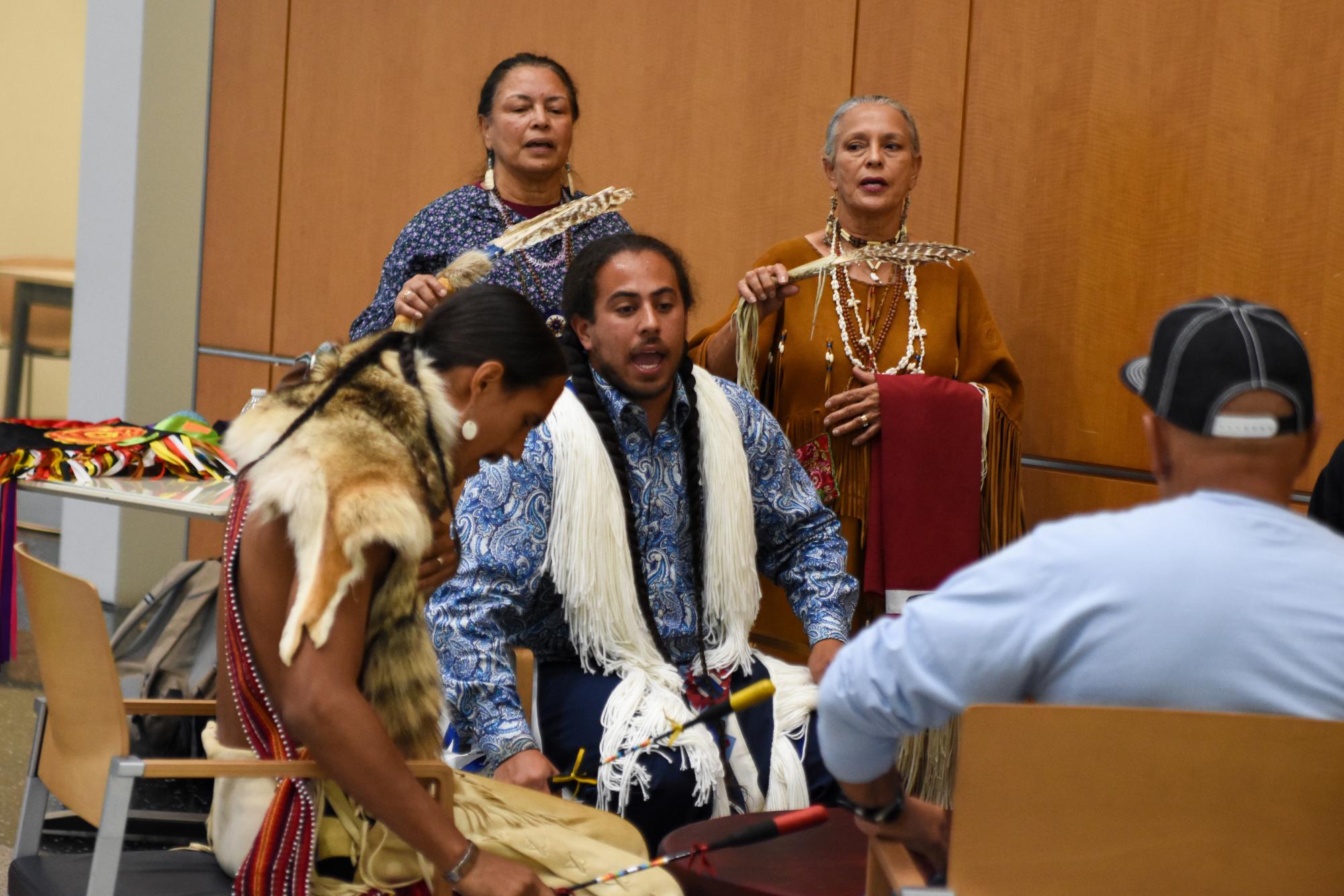
“This is some of the only opportunities that students will have organized in school to educate themselves on Native history, issues, culture,” Swanson said.
Swanson said the group will host a discussion this coming Thursday with GW alum Kathy Baird, the chief communications officer for the Washington Post, and Robert Maxim, a senior research associate at the Brookings Institution, who will discuss their experiences being Native students at GW and as employees in their respective careers.
Mykala Bledsoe, a sophomore and a member of SINAR, said she reflects on the spirituality of her own Mescalero Apache tribe heritage with family and friends during the month each year. Bledsoe said she prioritizes time with her mother to immerse herself in her heritage by connecting with nature throughout the month.
“I like to spend the time with my friends and either just take time to learn about a new topic or share different cultural elements that are significant to me and just kind of be in community with people that I respect and trust,” Bledsoe said.
Bledsoe said Indigenous students are underrepresented on GW’s campus because of the absence of a Native American studies program, in addition to the few history courses offered. Bledsoe said SINAR’s programs educate students on Indigenous culture and community and hold GW accountable for the lack of Native American representation outside of student-organized programs.
“GW students need to learn about Native perspectives and culture from actual Native folk and not from their professors or what the University might put out in statements or through land acknowledgments,” Bledsoe said. “They need more personal and hands-on experience with Native culture because that’s the realest form it’s going to have.”
Shawn Shafner, a second-year graduate student directing a new student fellowship, “Landing in Piscataway Terrain” — which aims to highlight Indigeneity and Native ecology on GW’s campus — said while Native American Heritage Month provides a necessary opportunity for cultural appreciation, it also allows for “further tokenization” by pushing all the Native American representation into one month.
“Native American Heritage Month, like many other of these so-called months, is an opportunity to highlight stories that are underrepresented, and to really give increased visibility and to uplift Indigenous voices and history,” he said. “There’s no wrong way to engage. Actually, I think the only wrong way is to not engage.”


